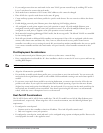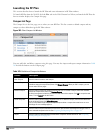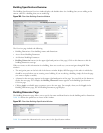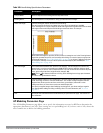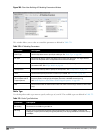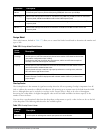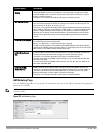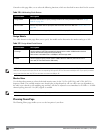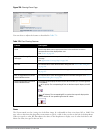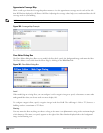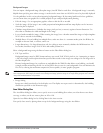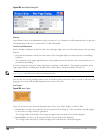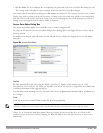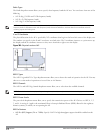
Radio Property Description
Spacing utilizing two 20 MHz channels as a bonded pair, requires that high-throughput be enabled
(checked). 40 MHz mode is most often utilized on the 5 GHz frequency band due to a greater
number of available channels.
This option is only available when 802.11n (HT) support is enabled (checked).
802.11b/g Desired Rate The desired 802.11b/g rate defines the estimated transmit rate within the WLAN coverage
area. The higher the speed, the smaller the coverage area, and the more APs required. The
valid values are: 54, 48, 36, 24, 18, 12, 9, 6, 11, 5.5, 2, 1.
This option is only available when 802.11n (HT) support is disabled (unchecked or grayed out).
When an 802.11n radio type, such as 802.11g + n or 802.11a/b/g + n, is selected and 802.11n (HT)
support is enabled (checked) on the 2.4 GHz band, the system will automatically define the
802.11b/g rate. The system looks at the defined 802.11n rate and the distance covered by the
defined rate; the system then selects a corresponding 802.11b/g rate based on the distance
covered.
2.4 GHz 802.11 (HT) Support High-throughput is available when utilizing the IEEE 802.11n standard and can be enabled on
the 2.4 GHz frequency band when either the
802.11g + n or 802.11a/b/g + n mixed-mode radio type is selected.
The 802.11n (high-throughput) draft standard supports MIMO (Multiple Input, Multiple Output)
and the option of 40 MHz mode of operation. However, high-throughput can be utilized on a 20
MHz channel or on a 40 MHz channel (bonded channel pair).
2.4 GHz 802.11n Desired
Rate
The desired 802.11n rate defines the estimated transmit rate within the WLAN coverage area.
The higher the speed, the smaller the coverage area, and the more APs required.
This option is only available when 802.11n (HT) support is enabled (checked).
The valid values when using 20 MHz channel spacing: 6.5, 13.0, 19.5, 26.0, 39.0, 52.0, 58.5, 65.0,
78.0, 104.0, 117.0, 130.0.
The valid values when using 40 MHz channel spacing: 13.5, 27.0, 40.5, 54.0, 81.0, 108.0, 121.15,
135.0, 162.0, 216.0, 243.0, 270.0.
2.4 GHz Use 40 MHz
Channel Spacing
40 MHz operation, which supports higher data rates by utilizing two 20 MHz channels as a
bonded pair, requires that high-throughput be enabled (checked). Due to a limited number of
channels on the 2.4 GHz frequency band, 40 MHz mode is most often utilized on the 5 GHz
frequency band where a greater number of channels are available.
This option is only available when 802.11n (HT) support is enabled (checked).
AM Modeling Page
The AM Modeling page allows you to specify the information necessary for RF Plan to determine the appropriate
placement of your AMs.
NOTE: AM coverage rates refer to the rate at which an AM captures packets. RF Plan uses that information to determine the
placement of AMs.
Figure 375: AM Modeling Page
DellPowerConnectW-SeriesArubaOS6.2 | User Guide RF Plan | 803



